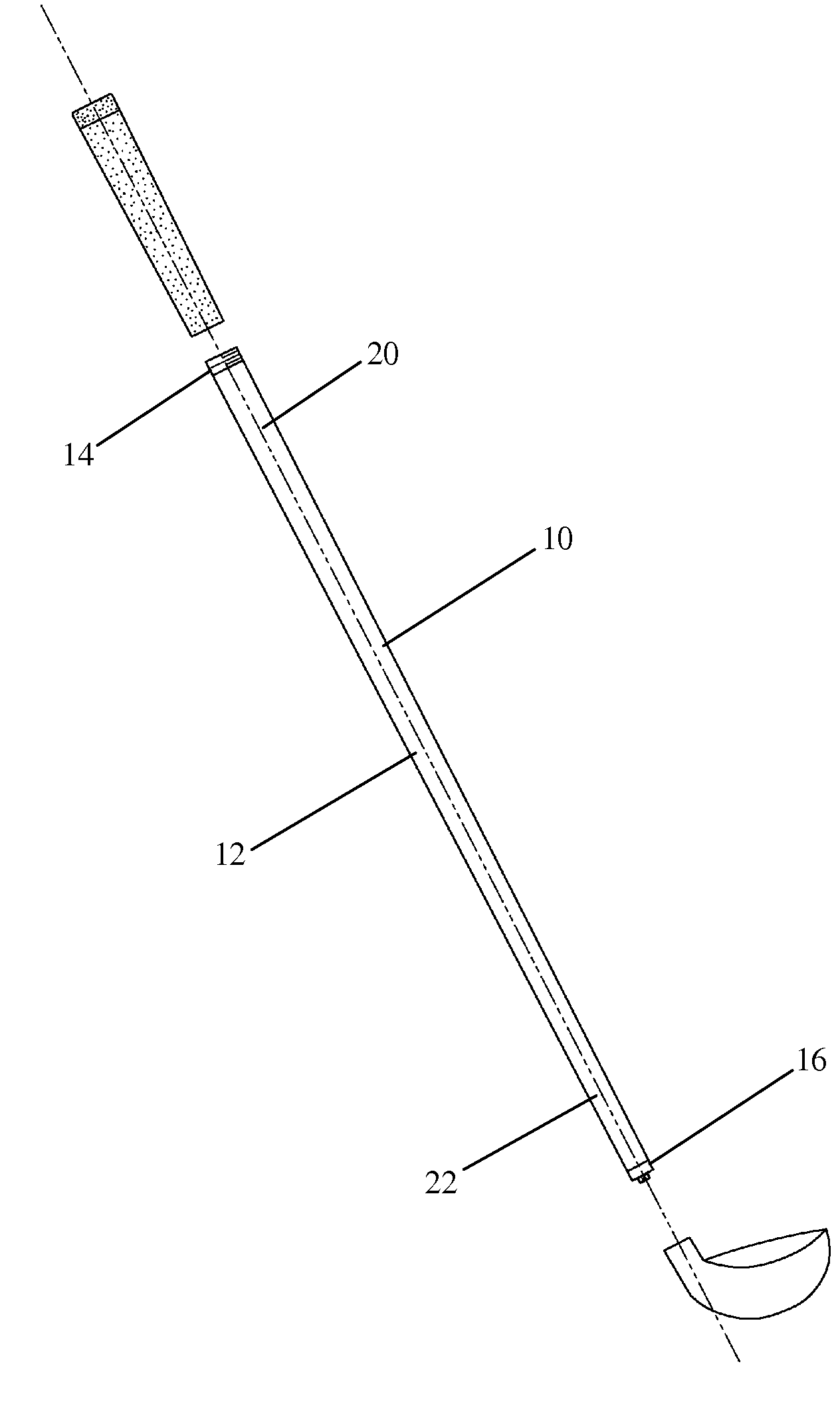Golf club shaft with adjustable stiffness
a golf club shaft and adjustable technology, applied in the field of golf equipment, can solve the problems of shaft being bent toward the ball at the time of impact, excessive lofting, and decelerating club face, so as to increase the amount of force, increase the axial tension of the tensioning material, and increase the stiffness of the shaft
- Summary
- Abstract
- Description
- Claims
- Application Information
AI Technical Summary
Benefits of technology
Problems solved by technology
Method used
Image
Examples
Embodiment Construction
[0020]Referring to FIGS. 1-3, the adjustable shaft 10 has a conventional graphite golf club shaft 12, a tensioner assembly 14, a retainer assembly 16, and a tensioning member 18. Referring to FIG. 1, the conventional shaft 12 is a tapered, tubular body with a wide grip-end 20 and a narrow head-end 22. The shaft 12 is a standard, 43 inch, regular flex driver shaft, although the length and the flex of the shaft 12 may be varied to suit a particular application.
[0021]Referring to FIG. 2, the tensioner assembly 14 has a golf club shaft extension 24, a tensioning nut 26, and a tensioning barrel 28. The shaft extension 24 is of a conventional type that will be familiar to those skilled in the art, having a narrow mounting portion 30 and a wide extending portion 32. The extension 24 is mounted to the grip-end 20 of the shaft 12 in a conventional manner, with the mounting portion 30 within the shaft 12 and the extending portion 32 protruding approximately 1 inch from the shaft 12. The exten...
PUM
 Login to View More
Login to View More Abstract
Description
Claims
Application Information
 Login to View More
Login to View More - R&D
- Intellectual Property
- Life Sciences
- Materials
- Tech Scout
- Unparalleled Data Quality
- Higher Quality Content
- 60% Fewer Hallucinations
Browse by: Latest US Patents, China's latest patents, Technical Efficacy Thesaurus, Application Domain, Technology Topic, Popular Technical Reports.
© 2025 PatSnap. All rights reserved.Legal|Privacy policy|Modern Slavery Act Transparency Statement|Sitemap|About US| Contact US: help@patsnap.com



